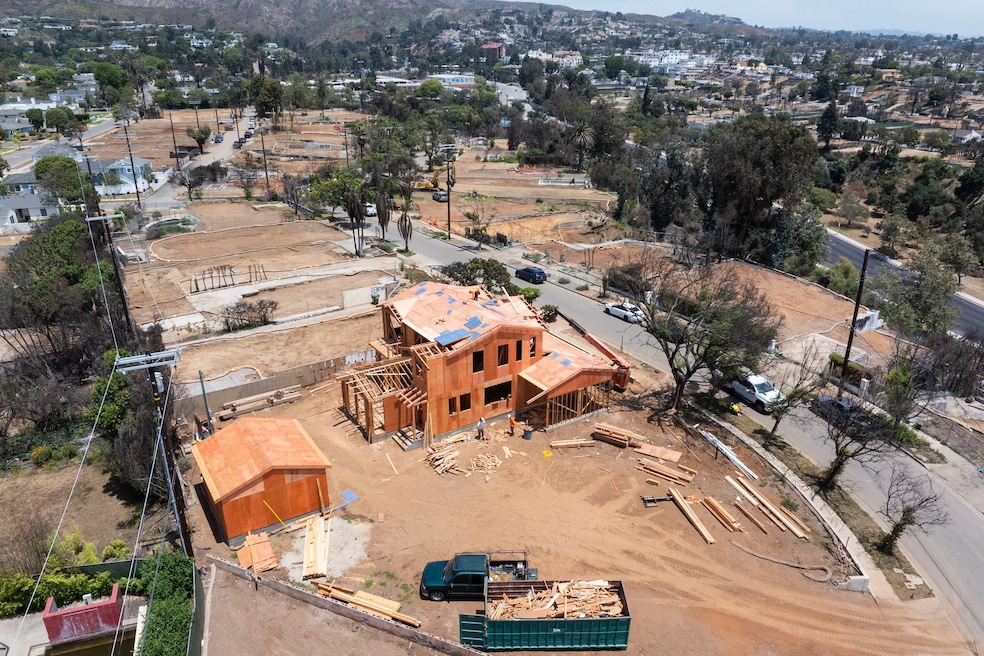The time it takes to construct a new house depends on several factors, such as the lot’s geography, permitting times, supply chain issues, weather and the home’s size.
Timing is a consideration for homebuyers deciding between an existing home and a new home. An existing home is often ready for move-in. However, it takes 7.7 months on average to build a home from start to completion, according to 2024 data from the U.S. Census Bureau. If you factor in the time it takes to receive a permit to break ground, add another 1.4 months.
When in doubt, always ask your builder. They will know their typical build time and workflow — and what could cause delays.
The greatest factor affecting the time frame is the type of home being built.
The more custom you make it, the more time it takes
There are three options that offer different build times: production, semi-custom and custom.
A production builder constructs developments with a high volume of homes, most often using a range of existing floor plans and styles. Think companies such as Pulte Homes, Lennar, and Meritage Homes, but there are smaller, more local production homebuilders as well.
These builders typically offer move-in-ready homes, which means little wait time on a build. Other times, buyers can select a home to purchase from the builder’s options and wait for it to be built.
In that case, it could take a builder a matter of months to complete a home. For T.R. Hughes in St. Charles, Missouri, a new home selected from an option of floor plans and styles can take about four and a half months to build, said owner Jason Hughes.
If a client selects a semi-custom home — one from T.R. Hughes’ options with additions and changes (another bedroom, a garage extension, or hand-selected finishes, for example) — the build time will be closer to six months.
A custom home will take the longest.
Ben Fry, owner of Fry Homes in Cincinnati, takes pride in his streamlined schedule. The custom builder completes the work in seven to nine months, from breaking ground to moving in, he said.
But for Andre Frazier, owner of Frazier Homes in Ohio, timelines extend from 10 to 18 months for the construction phase due to the sheer size of the homes. Frazier Homes builds custom properties with an average square footage of 7,000.
Other factors also influence build time
Geography
Building a home on a flat lot will be simpler than constructing a seaside or mountainside residence.
Builders must work with outside experts, such as structural and civil engineers, to determine how to build a home on difficult terrain. They also need to prepare the challenging lot for construction and may have to coordinate building material delivery in creative ways.
Sean Sullivan of Living Stone Design + Build in Asheville, North Carolina, builds luxury custom homes in the mountains. His firm’s timeline, on average, is 14 to 18 months for the build.
Design complexity
A larger home typically takes longer to build, and so will a more complex design.
“If we’re adding in golf simulators, if we’re having a multiple garage home … if there’s any features that are bespoke,” Frazier said. “Features like that extend the timeline because it’s different, custom, and it’s intricate.”
Most homebuilders do not consider the design process as part of the build time because it happens before breaking ground, in a phase called "preconstruction."
Preconstruction is the time when the builder prepares all plans, selections, schedules and labor before starting to build. A significant portion of preconstruction can be taken up by setting specifications.
Sullivan notes his design process can be six months long because clients select every product, from the lighting fixtures to the doorknobs. If clients make design changes during the process, that will add time.
Permitting
The permitting process requires builders to submit project documentation to community officials to ensure the home meets building codes. The time it takes to receive a permit varies by municipality, and the complexity of the project and how detailed the builder is can also influence permitting times.
National data from the U.S. Census Bureau says permitting takes about 1.4 months. In some areas, like near St. Louis, where T.R. Hughes operates, permitting can be three to six weeks. In Washington state, however, builders could wait up to six and a half months, according to the National Association of Home Builders.
Weather
Build times are often at the mercy of the weather. Rain, harsh winters and extreme temperatures of any kind make pouring a concrete foundation challenging because it needs to cure.
Builders tend to coordinate construction starts to coincide with good weather times of year, like the fall, when Frazier Homes likes to pour a foundation before winter sets in.
Fry of Fry Homes said he has had to pause work on a home for over a month because of snow.
Labor
The construction industry has long faced a shortage of skilled tradespeople. Homebuilders work with people who have special skill sets necessary to build homes, like plumbers, electricians and tile setters. A shortage of talent means high demand, and some builders must wait for openings in schedules to get them on site.
The time it takes to build a home can vary from as little as four months to nearly two years, depending on hundreds of factors. Check in with local builders to get their averages — and plan on tacking on some time to that.

